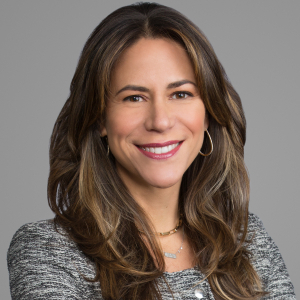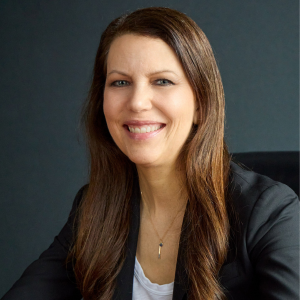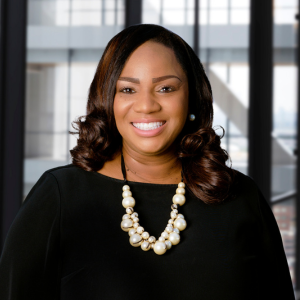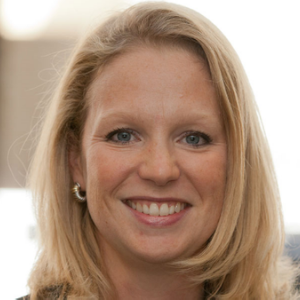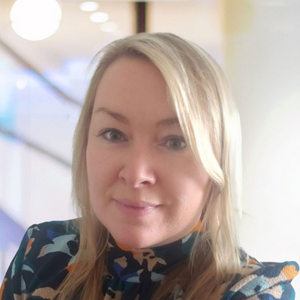Fixing The Broken Mentorship Model To Help Close The Leadership Gap
by Anna Robinson, CEO and co-founder of Ceresa
Walking into a Fortune 500 boardroom today, you’re more likely to find a CEO named John than a female CEO.
In fact, only 5% of Fortune 500 CEOs and 20% of board members are women, which has been the case for multiple generations, as reported by BCG.
Breaking the cycle – the continuing need for female mentors
As most people know, the number of women in the workforce has grown over the last century. However, the number of women in senior management roles has plateaued. According to the Women Ahead report, Women make up nearly half of the global workforce (49%), yet one-third of organizations don’t have any women in senior management roles. Why the disparity? A study by Bain & Co found that when women enter the workforce nearly 50% of them aspire to move to senior leadership, but within just five years this number drops to just 16%. This typically corresponds with the time when many women receive their first major promotion but before they are typically starting a family. The promotion to manager is where men have a higher promotion rate than women. McKinsey & Co’s Women in the Workplace report shows that , only 79 women are promoted to manager for every 100 men. Largely because of these gender gaps, men end up holding 62 percent of manager positions, while women hold only 38 percent. This is also the time when support for women in the workplace drops off – as found by both Bain and McKinsey’s studies. These are all critical junctures where mentorship can be most effective in helping women to set their aspirations, navigate these changes and excel in both their personal and professional lives.
Ceresa’s research of the first cohort of 50 mentees shows that the top five reasons women seek mentoring encompass questions of work-life balance and finding meaning, alongside professional development and tactical career planning. This is why the need for effective mentorship for women is greater than ever. Programs that offer support in only one of these crucial areas leave women drastically under-resourced. Companies offer programs geared toward traditional skill development. Yet, as pointed out in HBR, traditional mentoring for women typically ends up focused on operating style and psycho-social issues.
So, how do we fix the broken model?
The good news here is that there is an answer that can help both women and their companies. Mentoring, when done well, has a significant impact on companies and the women participating. One of the most comprehensive studies of mentoring impact found that formal mentoring programs can drive an increase in retention by 40-50% for mentees and mentors. Yet, we very rarely come across internal mentoring programs that have been set up to achieve meaningful, long-term impact.
63% of women have never had access to any formal mentoring, according to a 2012 DDI survey, and especially lack access to senior mentors. While some people argue that mentoring should be organic, in reality, these stats prove this is not working for women. With fewer women in leadership roles, women are missing mentorship that can help with gender-specific issues, and research even shows male mentors can be intimidating rather than helpful in empowering their female colleagues and mentees, as reported by the Huffington Post. This broken model also holds the belief that any senior leader can be a mentor – which is definitely not the case.
The new mentoring model needs to provide mentors training on the skills and attributes needed for successful, high-impact mentoring. And the skills required for quality mentoring are not necessarily synonymous with the qualities needed to be an effective leader. Deep listening, asking powerful questions and focusing on sharing experiences rather than giving advice are all critical to high impact mentorship but are not always required of senior leaders in the workplace. Formal mentoring programs need to coach mentors on these mindsets and skills.
Traditional models also lack structure and accountability. If both parties fail to have mutual and clear expectations, the relationship often fizzles out because one or both parties become discouraged or uninterested. The new model solves for this by encouraging each party to dedicate time and effort in fostering the mentorship relationship – with a clear cadence and schedule upfront. Critically, mentees need to be prepared and intentional about their goals – including submitting a specific agenda ahead of time to their mentor.
We’ve also seen that in status-quo mentoring models, the feedback women receive focuses on psycho-social issues or is based around their work style rather than true career development and professional success, as referred to in the HBR article. The new model must incorporate hard career development and goals while incorporating broader health, wellness and personal issues. This also requires mentees to be prepared before they begin working with a mentor so they can identify the areas in their lives where they need the most help, and define their vision and specific goals.
Finally, to ensure a deep impact from mentorship, the engagement, participation, and impact of the program should be tracked. Collecting feedback and outlining the impact for the company and the individual is critical. This might include tracking satisfaction and sense of empowerment from the program, as well as measuring promotion and pay grade changes. Companies can also track improvements in brand loyalty and retention, using measures such as Net Promoter Score.
The future is female (mentorship)
While working to solve the gender leadership gap through mentorship, we are doing more than just addressing inequality for inequality’s sake. We are also opening the doors to leverage all women to improve business and societal outcomes. As seen, mentoring can improve retention by 40-50% for mentors and mentees. Furthermore, Women Ahead found that 75% of executives claim mentoring was critical to their success. Now is the time to accelerate the rate at which women achieve and thrive in leadership positions, and better mentorship is one tactical step to reaching this goal. But companies need to do more than offer lip-service to mentoring. They need to take the effort to structure the program, help mentees be prepared and intentional, offer specific coaching and support to mentors, provide more sophisticated methodologies in matching mentees and mentors – and then measure impact. If you can’t measure it, it cannot be improved upon – and will rarely be sustained as a business imperative.
About the Author
Anna Robinson is CEO and Founder of Ceresa, a tech-enabled and research based mentorship platform for aspiring women leaders. Anna launched Ceresa in 2018, with the mission of closing the global leadership gap for women. Anna dedicates her time to shaping the company’s vision and strategy, driving consistent high-quality programming, building a world-class team and culture, and shaping a sustainable social impact business model. Prior to launching Ceresa, Anna was a Partner at McKinsey & Company, where she led strategy and transformation work for US and global health systems, as well as leading several women’s initiatives. Anna was also COO at an early-stage tech company. She holds an MBA from the Stanford Graduate School of Business, MPhil, and BA from the University of Oxford in England. She currently lives in Austin, Texas with her husband and three daughters.
The opinions and views expressed by guest contributors are their own and do not necessarily reflect those of theglasshammer.com




